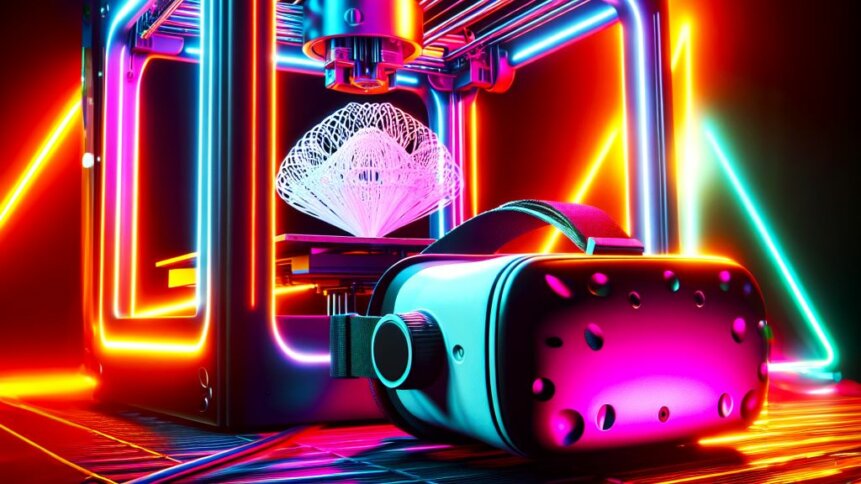Rapid prototyping dream team – VR and 3D printing

|
Getting your Trinity Audio player ready...
|
One of the biggest misconceptions about 3D printing – the notion that it doesn’t suit the production of goods in high volume – has been put to bed by brands such as Adidas, which has turned heads in the footwear industry with its striking midsole designs. Virtual reality (VR) is similarly misunderstood and sometimes dismissed as a gimmick. But put VR and 3D printing together, and you have a rapid prototyping dream team that’ll be the envy of your competitors.
And don’t think that you need to spend north of US $3000 on an Apple Vision Pro to reap the rewards. The benefits of combining VR and 3D printing can be realized with an affordable headset such as the Quest 3 – released in 2023 – or even a Quest 2, which is now available at a lower price point and with a software speed up.
Iterate faster
A big fan of having designers use VR to iterate designs in 3D is Jared Goldman – VP of Design at New Balance (another footwear company at the bleeding edge of manufacturing). And there are some compelling reasons to back up his thinking.
By Goldman’s estimation, physical samples have a turnaround time of around 45 days – once you’ve added up sending the tech package, production of the prototypes in Asia, and shipping of the shoes back to the US. However, it’s possible to produce photoreal samples of the same designs in seven days, or maybe less, in a virtual environment.
Decision makers can see the shoes from all angles in a virtual environment and have confidence in their feedback that compares with handling physical samples. Plus, headset-wearing team members can collaborate easily and in real-time, no matter where they are across the globe – provided that they have an internet connection.
“The better you can express your idea, so that somebody who is a non-designer can understand it, the more successful you’re going to be,” Goldman comments in a case study shared by Gravity Sketch – a developer of VR design software that is increasingly becoming part of 3D printing product workflows.
Example of a VR and 3D printing toolchain
- Gravity Sketch – for virtual product creation
- Blender – to add materials appearance for final design validation
- Ultimaker Cura – for slicing and 3D printing production preview
- 3D printers – to produce the finished goods
Today, there are numerous online tutorials showing how to combine VR and 3D printing to go from first idea to finished product. Beginning with a rough sketch created using handheld VR controllers, the next step is to add virtual form to the digital design, with lighting effects making the output appear all the more realistic.
Slicing software will prepare the model for 3D printing, where it’s possible to adjust support material and preview the build to double-check that all’s well before committing fabrication time and materials to the job.
And it’s not just about keeping sneakerheads happy with a stream of new and exclusive trainers, VR and 3D printing can be combined to deliver progress in areas such as medical visualization too.
Materialise – a pioneer in the field of 3D printing – points out that the number of hospital-based 3D printing facilities has increased exponentially to help with tasks such as patient-specific surgical planning.
On TechHQ, we’ve written about how beneficial VR can be to medical training and upskilling hospital staff. And 3D-printed anatomical models take that tactile experience to the next level.
Construction is another area that’s taking a keen interest in additive manufacturing – this time using giant 3D printers to build homes layer by layer. Here, VR can be used by designers and home buyers to experience what it’s like to move around a digital render of the building prior before nozzles start squirting out cement.
“We see this tool as an exciting way the get clients, designers, and contractors up to speed on the inner workings of how a 3D construction printing project actually works,” commented Marchant Van Den Heever, CTO of HTL.tech – a distributor of 3D construction printing technology in the UK and Ireland.









